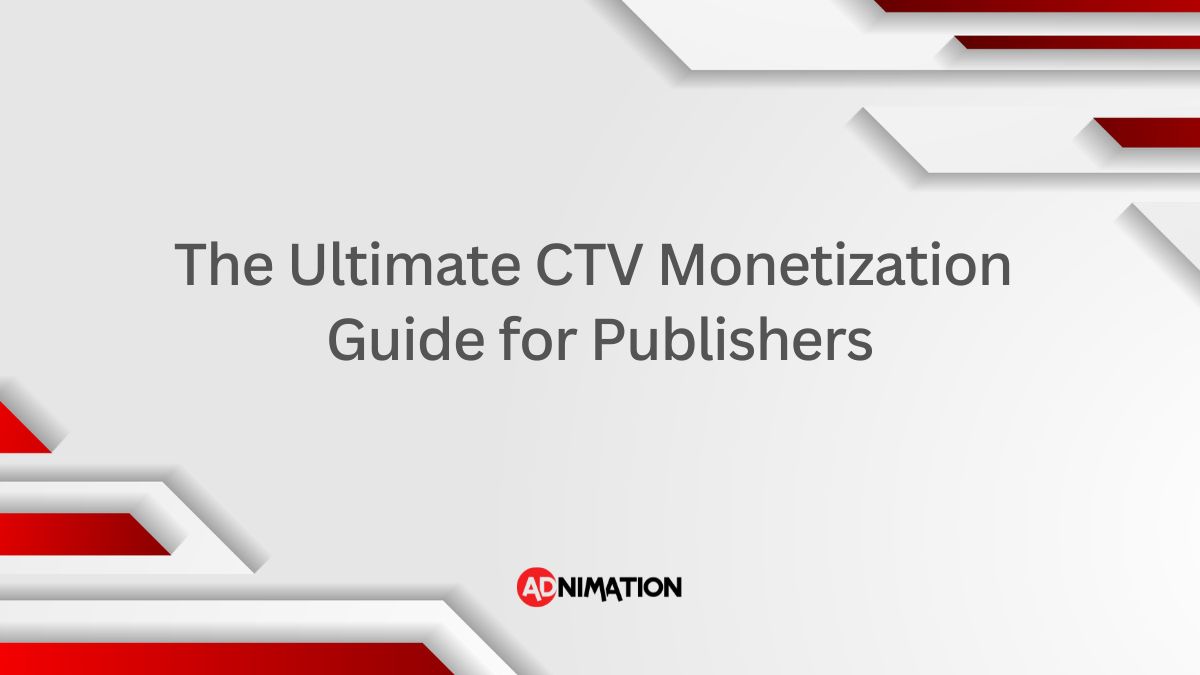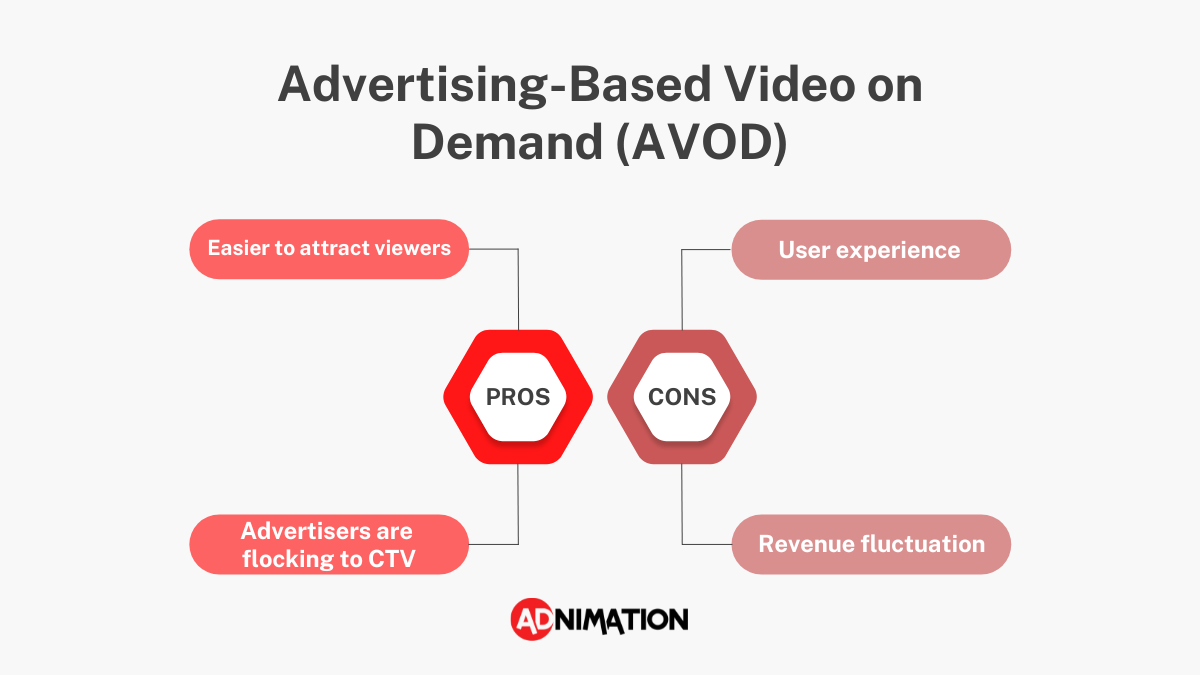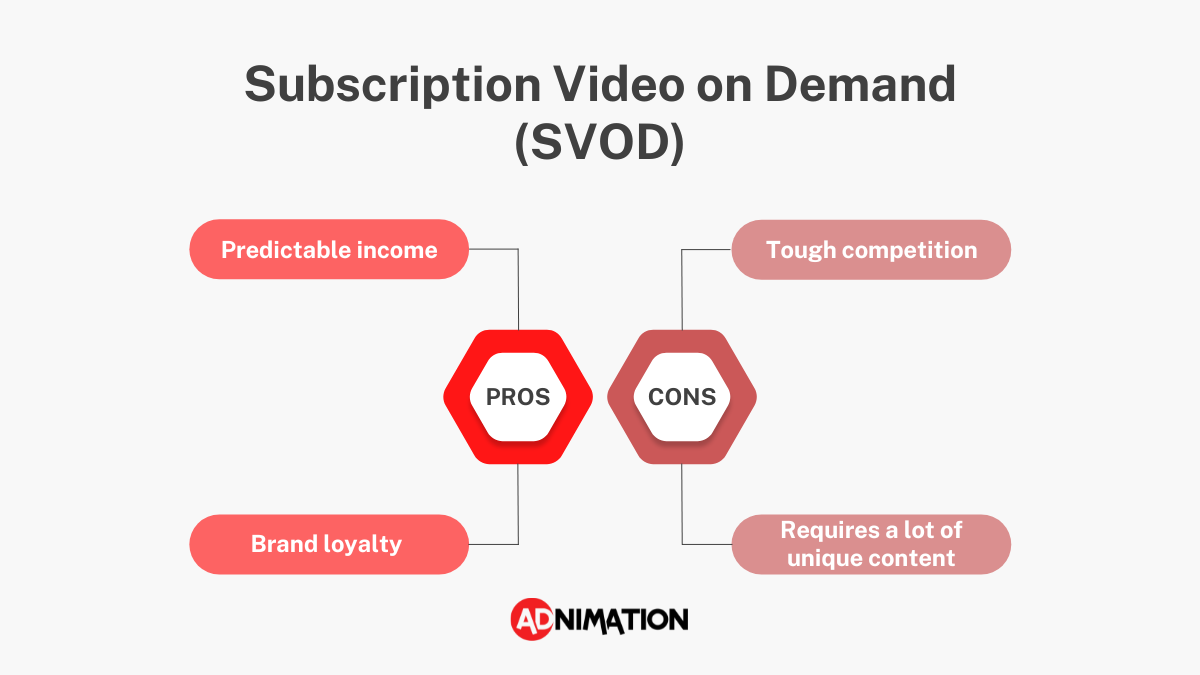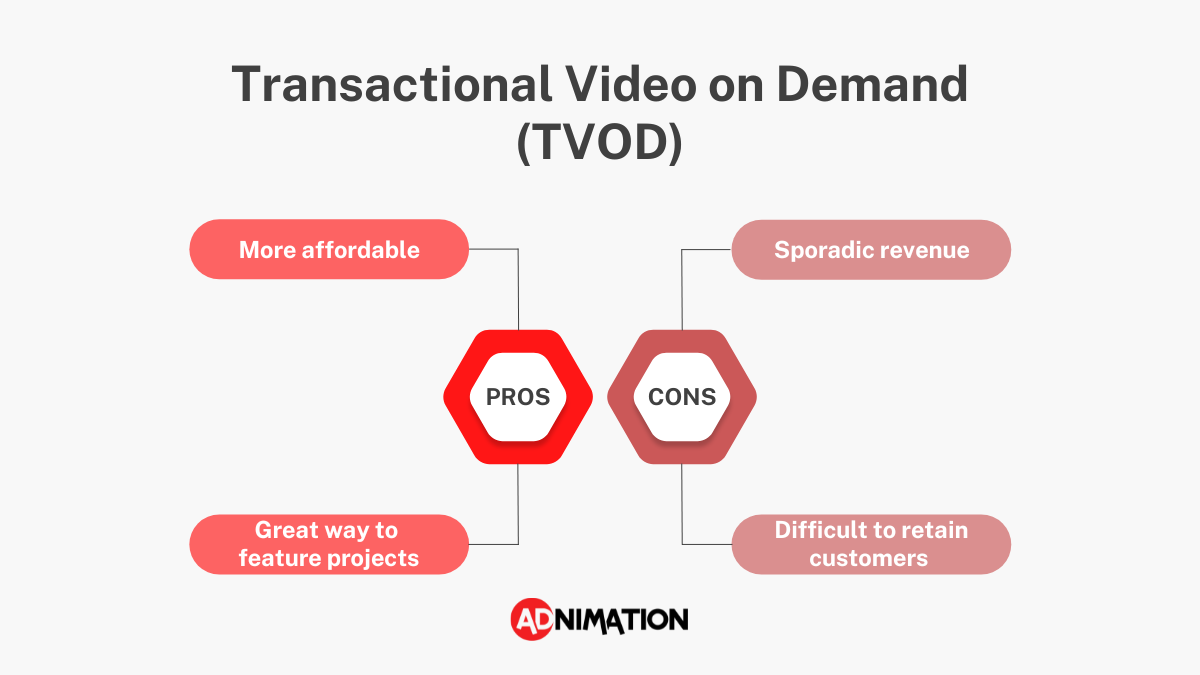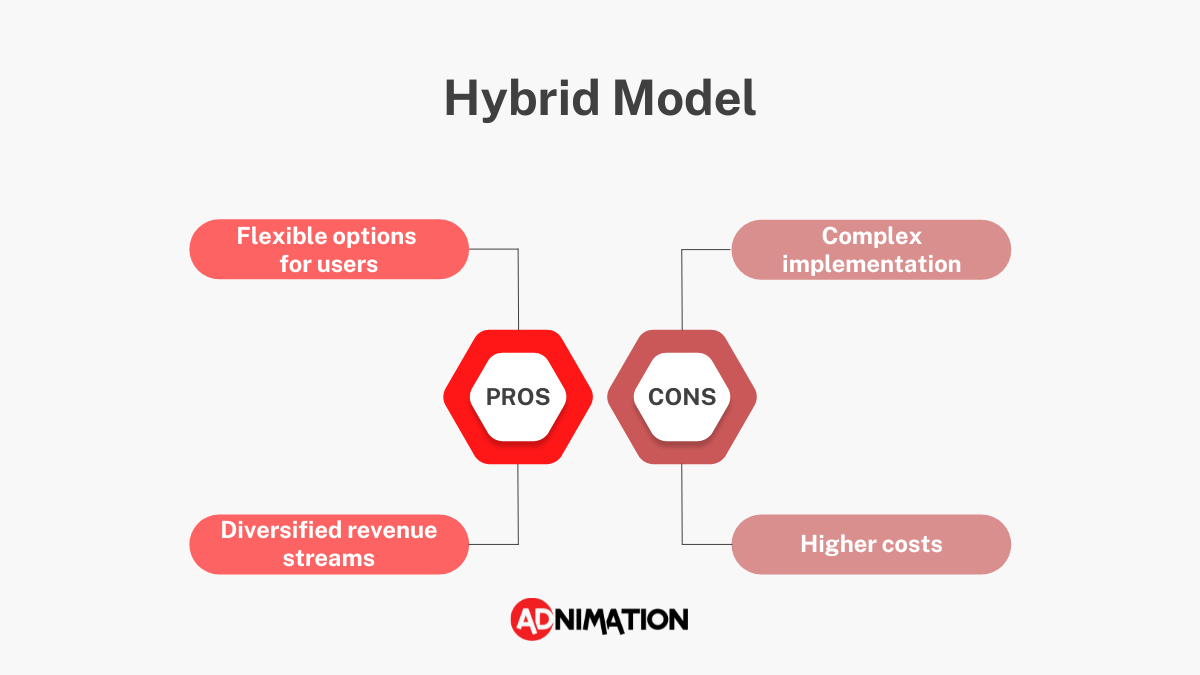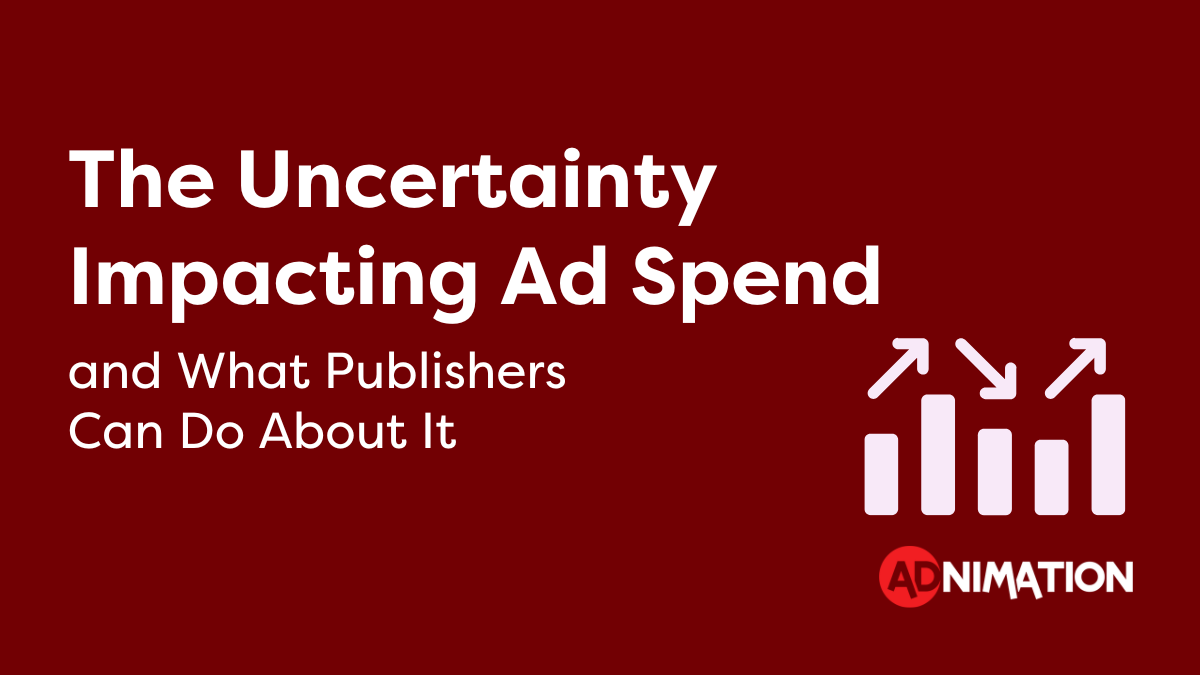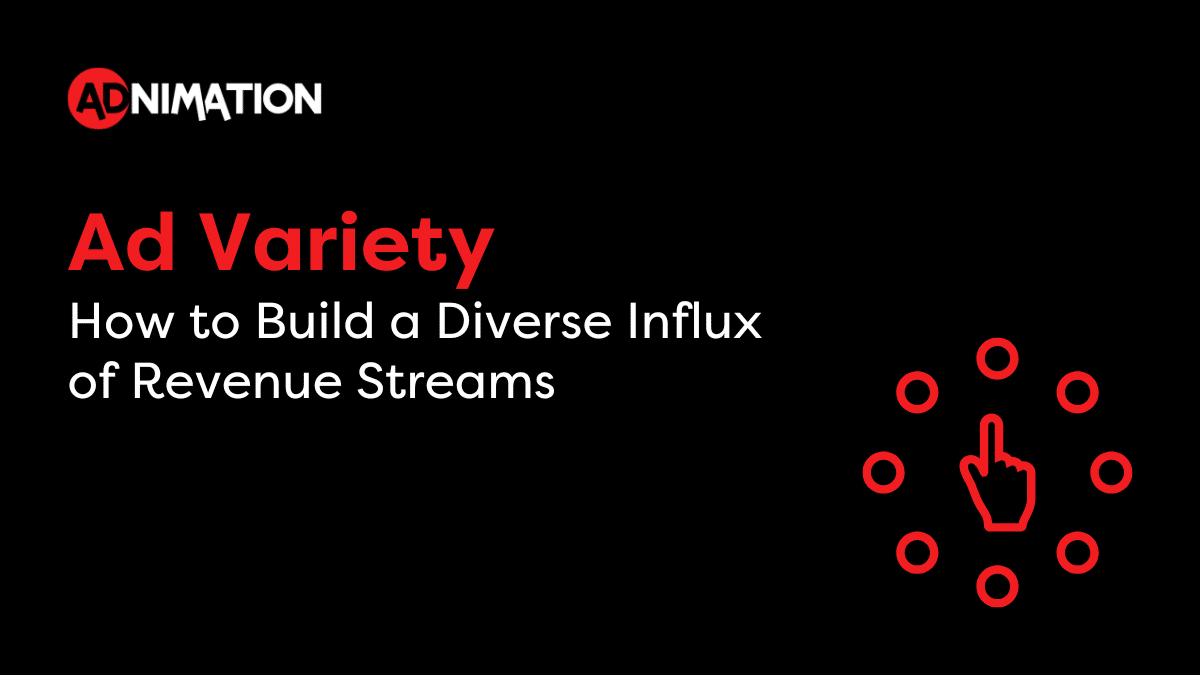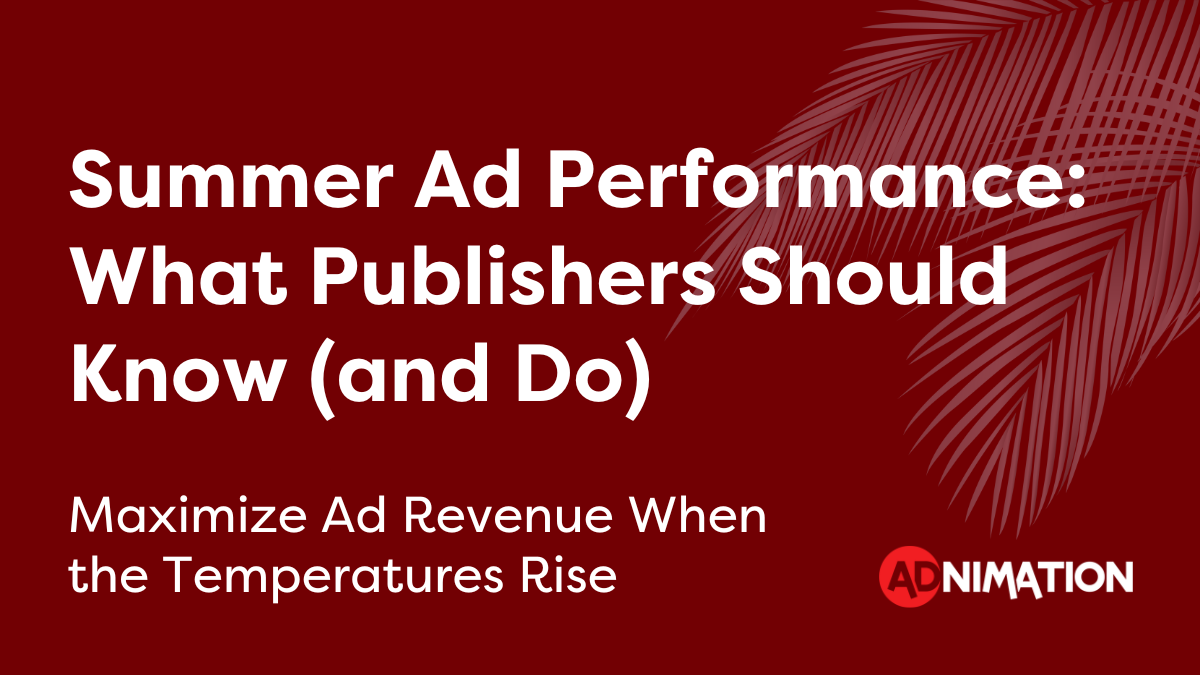As a CTV publisher, you are well aware of the impact and potential of CTV, smart TV, and over-the-top (OTT) streaming in the digital advertising industry.
With this in mind, there’s no need to waste your time citing data on CTV ads, or bore you with basic explanations like the difference between CTV, OTT, and Linear TV.
You came here to learn about CTV monetization, and you’ve come to the right place.
In this article, we will review the four primary CTV monetization models – AVOD, SVOD, TVOD, and hybrid – and discuss the pros and cons of each.
Advertising-Based Video on Demand (AVOD)
The AVOD model is the go-to model for most CTV apps.
This model enables CTV publishers to utilize programmatic video ads to generate revenue, allowing viewers free and unlimited access to your content.
The bigger your audience, the higher your ad revenue will be.
AVOD Advantages for Publishers
There are two major advantages to the AVOD CTV monetization model:
Easier To Attract Viewers
Users love quality content. They also love free content. Combine the two and you have a strong monetization model.
If you need more proof, just look at YouTube. It’s AVOD model currently boasts 2.6 billion monthly active users.
With smart ad placements and frequency, the vast majority of users don’t mind watching ads in exchange for free content. In fact, AVOD streaming services are outpacing their subscription video on demand (SVOD) counterpart.
According to Comscore’s 2022 State of Streaming analysis, from 2020 to 2022, U.S. households increased their usage of AVOD services by 29% compared to a 21% increase of SVOD services.
That isn’t to say that SVOD is not effective. As we will soon see, companies like Netflix and Amazon have utilized the SVOD model to great success.
But if you’re not a giant publisher on par with the big guys, implementing an SVOD model is difficult.
Advertisers Have Their Sights Set On CTV
Given the rapid rise of CTV, advertisers are flocking to CTV apps.
Advertisers are willing to pay substantially higher CPMs for CTV ads than for traditional digital advertising.
This is for a bevy of reasons including advanced targeting, high viewability, and larger budgets.
In the case of CTV, the demand greatly surpasses the supply, making your CTV app very valuable to advertisers.
AVOD Disadvantages for Publishers
There are two primary disadvantages to AVOD that CTV publishers should be aware of:
User Experience
While ads have become part of our everyday lives, some viewers prefer an ad-free user experience.
There are three types of CTV ads: pre-roll, mid-roll, and post-roll.
As a publisher, you must pick a correct balance of ad type and ad frequency. The goal should be to show enough ads to generate a sizable revenue, but not overload the viewer.
Revenue Fluctuation
Ad revenue is more susceptible to elements outside of the publisher’s control, like the state of the market or the January ad revenue slump.
In a struggling market, advertisers reduce their ad spending, which results in a decline in revenue for publishers.
In contrast, SVOD revenue is less impacted by market conditions because the revenue stream is more predictable.
Best Way to Implement AVOD
As with all programmatic advertising, the key is competition.
The more quality advertisers you have competing against each other, the higher you can charge for your ad inventory.
The best way to access all of these advertisers is through Google, which runs the world’s largest ad exchange. The problem is that Google arrived a little late to the CTV game, and only in 2022 awarded its first CTV monetization product.
Fortunately, we at Adnimation were the first company to successfully launch Google’s CTV monetization product – and with impressive results.
As a publisher, working with a monetization company that has access to Google’s demand is critical for leveraging competition and maximizing revenue.
Subscription Video on Demand (SVOD)
Unlike AVOD, SVOD requires users to pay a subscription fee. In return, they have unlimited access to the content without ads.
Thanks to the likes of Netflix, Amazon Prime, HBO Max, Hulu, and Disney+, the SVOD model has exploded over the past several years.
Although still less popular than AVOD, SVOD platforms are major force in the CTV and OTT market.
SVOD Advantages for Publishers
As a publisher, the SVOD model has two main advantages:
Predictable Income
For businesses in general and publishers in particular, a steady and secure source of income is the ultimate goal.
Predictable revenue enables you to implement better planning for your business and constantly invest in creating new high-quality content.
Additionally, you have the option to raise the subscription fee should you see fit.
Brand Loyalty
SVOD services tend to enjoy higher brand loyalty compared to AVOD.
After all, if the users don’t like the service, they wouldn’t pay to use it.
This loyalty often leads to long-term engagement, resulting in continued revenue for the publisher.
SVOD Disadvantages for Publishers
There are two major cons to the SVOD model:
Tough Competition
Successfully launching an SVOD service is challenging in a market dominated by heavyweights like Netflix and Amazon Prime.
As a new entrant, you will face fierce competition from established brands, making it harder to attract subscribers.
Moreover, consumers only have a limited number of subscriptions they are willing to pay for. This makes it increasingly challenging to convince them to add another service to their existing lineup.
You Need a Lot of Unique Content
To entice customers to pay for your service, you must offer unique and engaging content.
Producing this type of content comes at a high cost, which presents challenges for new publishers who don’t have the vast resources of companies like Netflix and Amazon.
Transactional Video on Demand (TVOD)
The TVOD model, also known as pay-per-view, charges viewers a one-time fee for access to a single piece of content.
Google, iTunes, and Amazon all offer TVOD options.
This model encompasses two subcategories: electronic sell-through (EST) and download to rent (DTR).
EST is where users purchase permanent access to a piece of content. Once the user has purchased the content, they own it and have the ability to watch it whenever they like.
DTR is where users pay to rent a piece of content for a specific period of time, usually 24 to 48 hours. Once the rental period is over, the user no longer has access to the content.
TVOD Advantages for Publishers
TVOD has two main advantages:
More Affordable
TVOD provides an affordable option to users who want to access exclusive content but who don’t want to pay a monthly subscription fee.
Great Way to Feature Projects
With TVOD, you can concentrate on creating high-impact, stand-alone projects.
Unlike AVOD and SVOD that require a constant flow of new content to retain viewers, TVOD is not burdened with this demand. It enables publishers to focus their efforts on producing big projects and making each one a highlight feature.
TVOD Disadvantages for Publishers
There are two major disadvantages to TVOD:
Sporadic Revenue
TVOD offers the least predictable revenue stream of all the models.
Forecasting the number of users who will purchase a new piece of content is difficult. This makes it challenging to plan and budget accordingly.
Difficult to Retain Customers
TVOD content is designed for users who only plan to make a one-time purchase, decreasing the chance of repeat business. This absence of customer loyalty makes it hard to attract long-term users.
Hybrid Model
The hybrid model involves using multiple monetization methods, including AVOD, SVOD, and TVOD.
By offering various methods for accessing content, you can cater to different user preferences and reach a broader audience.
This approach is often adopted by publishers looking to diversify their revenue streams and offer a range of options to their users.
Hybrid Advantages for Publishers
The hybrid model has two main advantages:
Flexible Options for Users
Utilizing a hybrid approach enables you to give users a more flexible choice of content.
For example, a user who doesn’t want to pay for a subscription can still access some content through ads, while a user who wants premium content can pay for a subscription or purchase individual pieces of content.
Diversified Revenue Streams
Having a diverse revenue stream can greatly benefit a business. For instance, when ad revenue is low due to market conditions, subscriptions can provide support. Conversely, if subscription revenue is down, ad revenue or TVOD purchases can help boost revenue.
Hybrid Disadvantages for Publishers
There are two major disadvantages of the hybrid model:
Complex Implementation
Implementing each monetization method presents its own challenges, and incorporating multiple methods increases the difficulty.
Higher Costs
The development, maintenance, and support required to effectively run two or three monetization methods leads to higher costs for publishers.
Bottom Line
For the majority of CTV publishers, the AVOD monetization model is likely the best choice.
To maximize revenue, it’s advisable to partner with a company like Adnimation that has access to the world’s largest CTV video ad demand through Google.
As your viewership grows, there will be opportunities to explore a hybrid model and determine if SVOD and TVOD are appropriate for your business.

